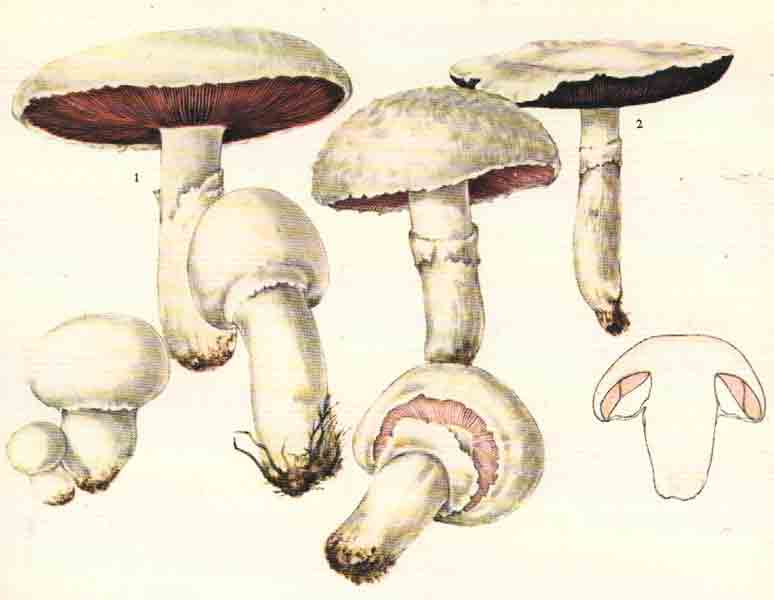 PSALLIOTA (Agaricus) CAMPESTRIS (Meadow mushroom) (1)
PSALLIOTA (Agaricus) CAMPESTRIS (Meadow mushroom) (1)
Cap globose or hemispheric; this shape persists for a long time before expanding more or less completely, 5-15 cm; the margin extends beyond the gills; in the typical form, sometimes named variety alba, it is silky white; at other times whitish or yellowish brown or brownish; sometimes covered with brownish scales; where bruised it becomes yellowish. Stem thick; rarely somewhat slender; of various shapes; white, sometimes slightly rosy; base often thinning, fusiform; other times thickened. Ring thin, simple, fragile, with fringed margin; evanescent, white. Flesh rather thick, firm; white; sometimes the flesh under the cuticle and that of the stem becomes pinkish in contact with air. Odor mild. Flavor
agreeable. Gills rather close, free from the stem; in unripe specimens delicate rosy color; in full maturity, blackish brown. Spores cocoa color. It grows in large groups, often forming fairy rings, in manured grounds, even along road embankments, but very rarely in woods; it appears a first time in late spring, then again at the end of the summer, when the weather is warm and dry, after a period of humid weather. Edible, excellent, even raw.
PSALLIOTA COMTULA (2)
Similar to P. campestris, but smaller; slight almond odor; found in meadows and in fields fertilized with organic manure substances; edible.
 PSALLIOTA (Agaricus) CAMPESTRIS (Meadow mushroom) (1)
PSALLIOTA (Agaricus) CAMPESTRIS (Meadow mushroom) (1)